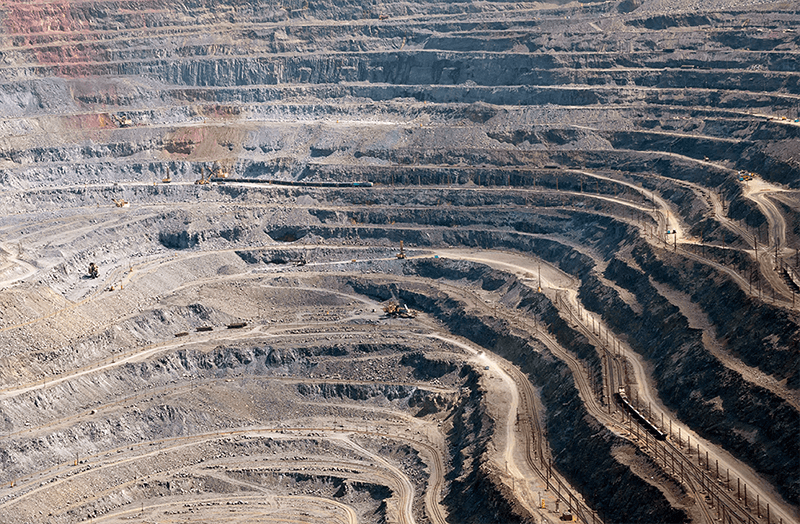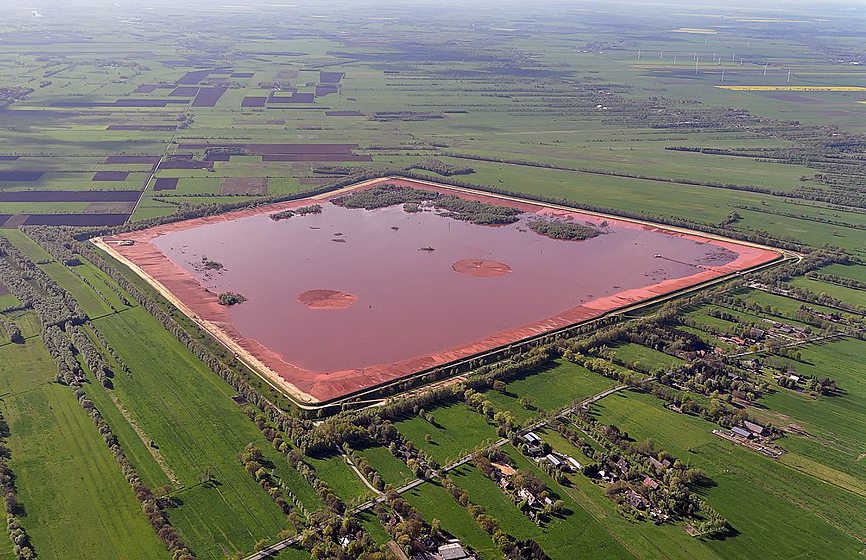Although more and more people are beginning to realize the gravity of the environmental crisis, the willingness to take meaningful action is almost non-existent. The only sensible solution to any wrongdoing is to stop doing it. Prevention is always better than cure. But we devote our attention to finding cures for our wrongdoings, rather than preventing them. The electric car is a prime example. It is being hailed as an ecologically friendly solution to our addiction to unlimited transport. It is no such thing.
Cars are outrageously harmful to the environment, and not only because of their fossil fuel emissions. They are very complex pieces of machinery, made up of as many as 30,000 parts, all produced by largely unsustainable industrial processes.
The four main components of a car are steel, aluminum, rubber and plastics
All four are major threats to the environment.
Steel is made from iron ore, which is mainly extracted by means of open-pit mining, one of the worst forms of environmental destruction, causing severe air pollution owing to a wide range of harmful emissions. It may also cause acid drainage, which can devastate rivers, streams and aquatic life for hundreds, and, sometimes, thousands of years. Mining also requires lots of water, which is taken from the environment, to its detriment.
Source: Shutterstock
Once extracted, the raw material is taken to industrial plants where it is turned into steel, one of the most energy-consuming and CO2 emitting industrial activities in the world.
It can be recycled. But recycling also requires energy and water, both producing considerable pollution. Suggestions that recycled steel is good for the environment is therefore complete nonsense. It is only less bad, but still bad.
Some countries have laws requiring mining companies to mitigate the damage they have done by "restoring" the land. Unsurprisingly, those companies are not particularly keen to do so. Enforcement is poor and according to Sourcewatch "most mined land is not fully reclaimed. Several studies have found that full reclamation is less than 10%."
Aluminum is made from bauxite and the process of transforming raw bauxite into aluminum is extremely energy intensive, requiring copious amounts of electricity, water and resources to produce. An extraordinary amount of electricity is required to yield the final product and, at least in the U.S., half of the smelting energy consumed is supplied by coal, one of the most notoriously polluting fuel sources known to mankind. The aluminum smelting process releases substances that are up to 9,200 times more harmful than carbon dioxide in terms of their effect on global warming.
When bauxite is extracted from the earth, the strip-mining process removes all native vegetation in the mining region, resulting in a loss of habitat and food for local wildlife as well as significant soil erosion.
The caustic red sludge and toxic mine tailings that remain are commonly deposited into specially constructed reservoirs and excavated mine pits where they ultimately seep into aquifers, contaminating local water sources.
Source: RaBoe/Wikipedia
aluminum can also be recycled, but as with steel, this is still an environmentally harmful process.
Rubber comes in two kinds, natural and synthetic. They are both used in the manufacture of car tires
Natural rubber is produced on huge plantations, which pose a severe threat to the environment, especially by promoting deforestation, with all its attendant evils, the worst being the loss of biodiversity, which is seen by many scientists as just as great a threat as climate change.
Natural rubber processing also causes serious problems for the environment due to the consumption of enormous quantities of water and the release of highly polluted effluents. Without proper treatment, discharge of wastewater from the processing of rubber to the environment has serious and long-lasting consequences.
Synthetic rubber is made from fossil fuels. It is bad for the environment in many ways. Its production requires a lot of energy and numerous chemicals, including several hazardous ones, and emits considerable amounts of greenhouse gases.
During use tires are steadily worn away by contact with the road surface. According to a review of the European Commission 10-30% of the rubber of every tyre is lost during its life.
The abraded material poses a double hazard. On the one hand it disperses in the air as particulate matter, which is extremely dangerous to living organisms, or is washed away in microplastics that eventually end up in the oceans. One study estimated that tires account for as much as 10% of overall microplastic waste in the oceans. A 2017 report by the International Union for Conservation of Nature puts that number at 28%.
At the end of their useful life tires pose a serious waste problem. They contain heavy metals and chemicals which leach into the environment, contaminating soil and water. In most countries, including China and the United States, the majority of scrap tires are handled domestically and dumped in landfills, recycled or reused.
They can be recycled or reused but that involves more processing and they are often burned as fuel, which naturally causes harmful emissions.
For many developed countries, shipping tires abroad is cheaper than recycling them domestically. In developing countries tires are burned to make low-quality oil, often under unregulated conditions that endanger both the workers involved and the environment.
Plastics are such a familiar scourge that they need no further explanation here.
All the above damage is shared by electric cars, with the additional problem of
batteries. Many of their ingredients involve mining activities that cause severe harm to the environment. At the end of their useful life colossal quantities of batteries end up in landfills, where they start leaking toxic substances into groundwater and the environment.
And then there is the problem of
roads. In developed countries enormous tracts of land are covered by roads, while their impact on the environment goes far beyond the mere covering of the soil. The United States for instance, has more than 4 million miles of roadways and it is estimated that 20% of land is impacted by their presence.
They decimate wildlife, killing huge numbers of animals (1 million a day in the USA alone), disrupt wildlife populations and fragment ecosystems. Some threatened species are being driven into extinction by their presence.
Roads are also a source of considerable pollution. Cars leak oil, their tyres leave particular matter. The huge quantities of salt used to deice their surfaces end up in the environment. Light and noise have also been shown to have detrimental effects on wildlife populations.
There can be little doubt that this catalog of ills should be more than enough to dispel the myth of the environmentally friendly car.
In conclusion all this becomes an afterthought when it is borne in mind that any environmental "benefit" of electric cars in comparison with fossil-fuel cars depends entirely on the source of their electricity. If it is not renewable, there is no reduction at all. In the USA renewable fuels produced 18% of electricity in 2019 and this figure is expected to grow very little in 2020.
"A great change in our stewardship of the Earth and the life on it is required, if vast human misery is to be avoided.”
World Scientists' Warning to Humanity, 1992.
"By failing to adequately limit population growth, reassess the role of an economy rooted in growth, reduce greenhouse gases, incentivize renewable energy, protect habitat, restore ecosystems, curb pollution, halt defaunation, and constrain invasive alien species, humanity is not taking the urgent steps needed to safeguard our imperilled biosphere."
World Scientists’ Warning to Humanity: A Second Notice, 13 November 2017
"The climate crisis has arrived and is accelerating faster than most scientists expected. It is more severe than anticipated, threatening natural ecosystems and the fate of humanity."
World Scientists' Warning, 5 November 2019
"The health of ecosystems on which we and all other species depend is deteriorating more rapidly than ever. We are eroding the very foundations of our economies, livelihoods, food security, health and quality of life worldwide."
Chairman of IPBES (UN), 6 May 2019
"We will only be able to keep global warming to well below 2°C above pre-industrial levels if we effect unprecedented transitions in all aspects of society, including energy, land and ecosystems, urban regions and infrastructure as well as industry."
IPCC (UN) report, 25 September2019




